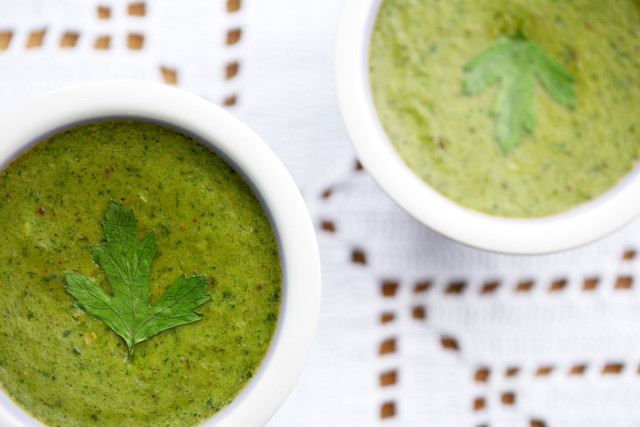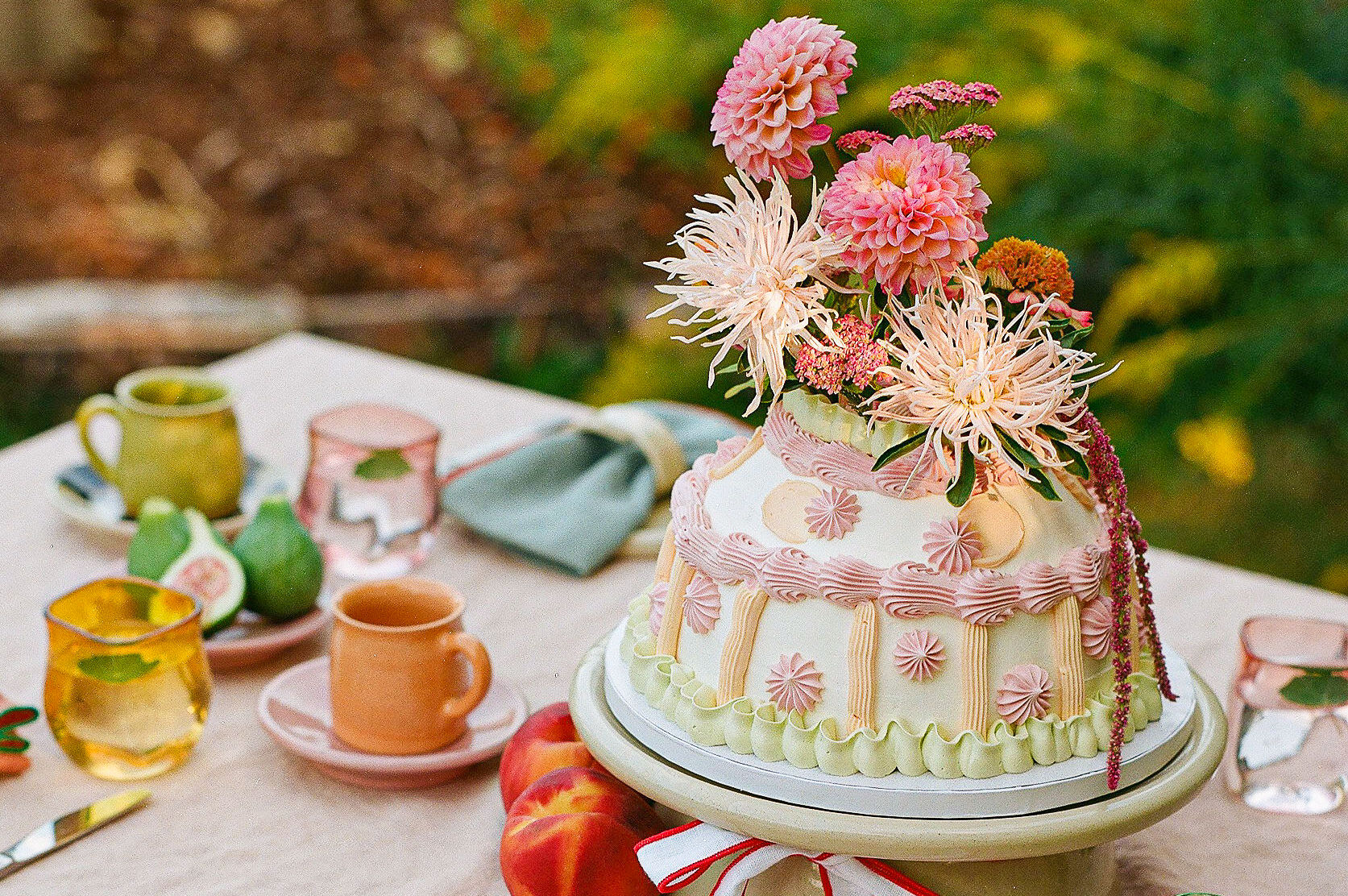Dessert for Dinner: Spinach and Leek Pudding

Image: Lara Ferroni
THE SAVORY pudding in front of me is green; there’s no denying that. But when a stray beam of sunlight streams in through the skylight of chef Robert Reynolds’s cooking-school kitchen at SE 28th & Pine, the sea-foam-colored pudding, made from fresh greens and herbs, positively glistens. At first bite, it tastes creamy and luscious, and the texture is incredibly rich yet impossibly silken. I glance at my tablemates—each of them, like me, students of Reynolds for the day—and descry the same stunned reaction: The simple dish has utterly transformed everyday vegetables.
“The French have a splendid idea of how to eat: Start the meal with an amusement like this one,” Reynolds says, nodding toward the savory pudding we’ve made ourselves for lunch—in addition to four other courses. “It should be gentle, and it should get your appetite going just enough to be warmed up for the main course.”
Elegant in appearance and flavor, savory puddings, custards and flans have graced European cuisine since the Middle Ages in the form of cheese stratas bound with leftover bread or the egg-laden Italian dish known as sformato. The French, however, are particularly fond of savory puddings, which they often refer to as timbales after the drum-shaped molds in which they’re typically formed. To prepare them, Reynolds explains, “They look to the market to decide what is perfect and follow formulas rather than recipes.”
And that’s precisely what we’d done earlier that morning, finding inspiration for ours at the farmers market in the form of crisp leeks, bundles of bright green spinach, arugula and parsley, small potatoes and aromatic tarragon.
Back in the kitchen, we learned the basic formula: To make a firm pudding that’s more like flan or custard, use three eggs to one cup of liquid (usually cream or milk); one cup of liquid plus two egg yolks produces a noticeably more delicate pudding the consistency of crème brûlée. Opting for the more stable end of the spectrum, we simply blanched the vegetables, purèed them with proper proportions of egg and cream, poured the silken mixture into ramekins and cooked the lovely little puddings in a hot water bath in a moderately heated oven, until they became just the sort of luxurious appetite-whetters the French so love to savor at the start of a long feast.
“Now, on to the next course,” Reynolds says after we finish our last few bites of pudding. No one objects. Our palates have already warmed to the idea.

Spinach and Leek Pudding
Chef Robert Reynolds suggests serving these custards hot, as accompaniments to chicken or pork; or cold, garnished with a salad as an appetizer. Recipe Courtesy Chef Robert Reynolds. Serves 4
INGREDIENTS
1 leek, washed, trimmed and sliced thin
½ small russet potato, peeled and sliced into½-inch-thick discs
1 clove garlic, peeled and crushed
1 cup packed spinach, trimmed
1 cup parsley leaves
2 cups arugula, stems discarded
3 sprigs tarragon, leaves picked, stems discarded
3 eggs
½ cup heavy cream
1 tbsp crème fraîche
Nutmeg, salt and pepper to taste
(1) Preheat oven to 325 degrees, and set rack in middle.
(2) Butter four 4-ounce ramekins.
(3) Bring a large pot of water to a boil for the bain-marie.
(4) Bring another large pot of water to a boil. Blanch potato, leek and garlic in boiling water for 8 minutes.
(5) Add spinach, parsley, arugula and tarragon and cook 3 minutes more.
(6) Drain under cold water, and squeeze vegetables to extract all liquid.
(7) Purée cooked vegetables thoroughly in a food processor. While it is still running, add eggs, followed by cream and crème fraîche. Season to taste with nutmeg, salt and pepper.
(8) Fill each ramekin with the mixture. Set ramekins in a large, shallow baking dish, and pour boiling water into the dish until it reaches halfway up the sides of the ramekins.
(9) Bake until centers are barely firm but a toothpick inserted into each center comes out clean, approximately 40 minutes.
(10) Remove ramekins from bain-marie and let rest until ready to serve.
(11) Unmold by running a thin, flexible rubber spatula or knife around edges and bottom of each ramekin.
(12) Invert onto plates and serve warm or cold.




